| Project Name: | Portland International Jetport – Terminal Expansion |
| Location: | Portland, Maine |
| Architect: | Gensler |
| Mechanical Engineer: | AMEC (formerly OEST) |
| Contractor: | Turner Construction Company |
| Manufacturer: | Air Enterprises |
| Equipment: | Custom Rooftop Air Handling Units |
| Size: | (1) 70,000 CFM unit, (1) 98,000 CFM unit |
| DAC Sales Engineer: | Pat Will |
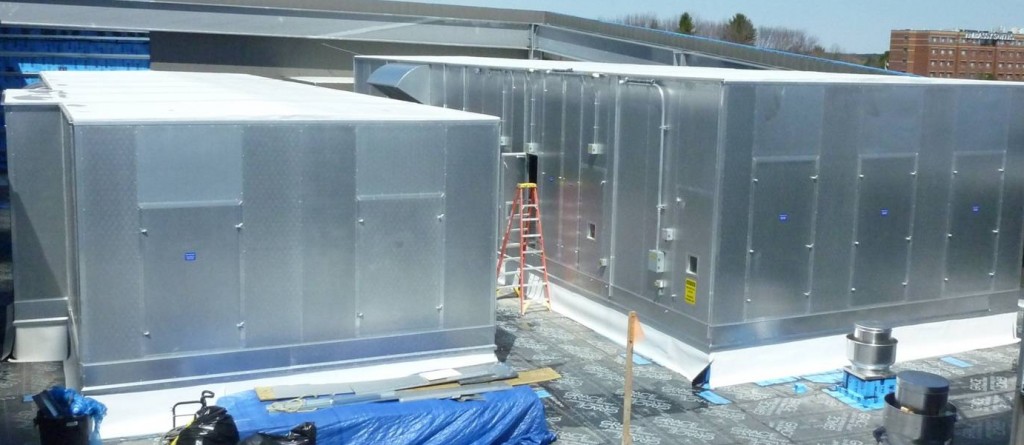
Project Highlights
City of Portland was adding a 145,000sqft terminal expansion to the Jetport, to create 4 new gates and improve the efficiency and flow of passenger services for the whole airport.
Project includes two large outdoor custom all aluminum air handling units, located side by side with central access off a common elevated steel walkway. The AHU’s sit in an open-air roof pocket to save project costs, with fresh air drawn in from the sides and relief air for both units onto the common walkway. Although the project was spec’ed for galvanized units, Air Enterprises was able to win the job with their all-aluminum construction, providing a higher quality product with a 40-year non-corrosion warranty.
The units are loaded with many high quality value-added features which are standard for Air Enterprises:
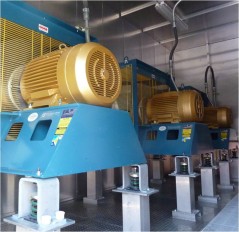 Supply plenum fans were provided with acoustic diffusers, which not only reduce the sound output from the fans but also boost efficiency by 3%
Supply plenum fans were provided with acoustic diffusers, which not only reduce the sound output from the fans but also boost efficiency by 3%- Cooling coils are installed above the drain pans for easy removal, and so that drain pipes can leave the unit above the base rail and not compromise the unit structure
- Units are provided with 20yr warranty white TPO roofing membrane, with perimeter rain gutters with welded downspouts
- Superior base flashing detail: a mounting bracket is provided for the roofer to bring the roof membrane up over the bottom of the base rail and secure it, and aluminum flashing is factory provided to slip into a groove above the base rail and extend down below the unit/curb interface
- All components are raised up off the floor and
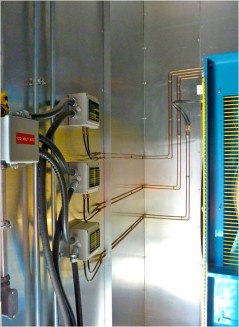 attached by welded joints only, to provide a cleaner washable floor area and so there are no holes in the floors for potential air or water leakage.
attached by welded joints only, to provide a cleaner washable floor area and so there are no holes in the floors for potential air or water leakage.
The units are also provided with UV lights for the cooling coils, something the owner feels is essential for minimizing maintenance and operating costs over the life of the units.
Questions on Custom Air Handling Units: askRick?
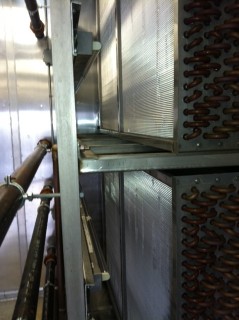
Portland Jet Port - Steril-Aire UVC Install
Related Blog Posts:
Custom Air Handling Units | 5 Reasons to use Custom Air Handling Units
Project Snapshot: Lawrence Memorial Hospital | Custom Air Handling Unit
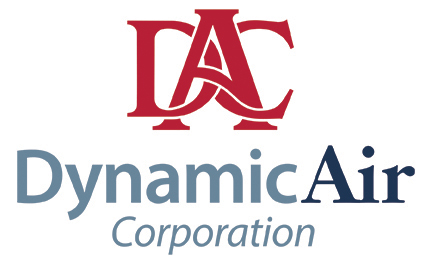




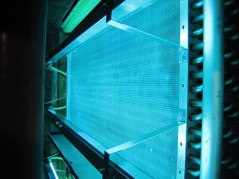
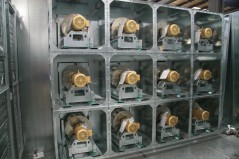
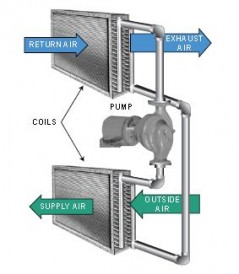
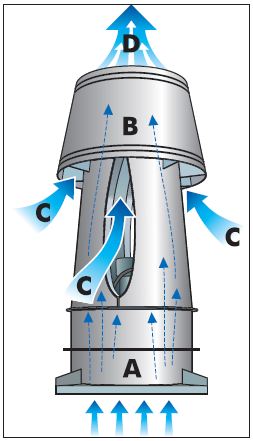
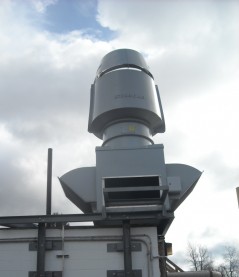
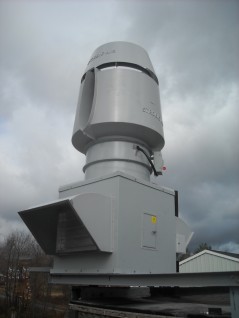
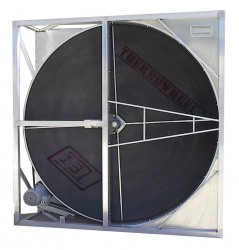
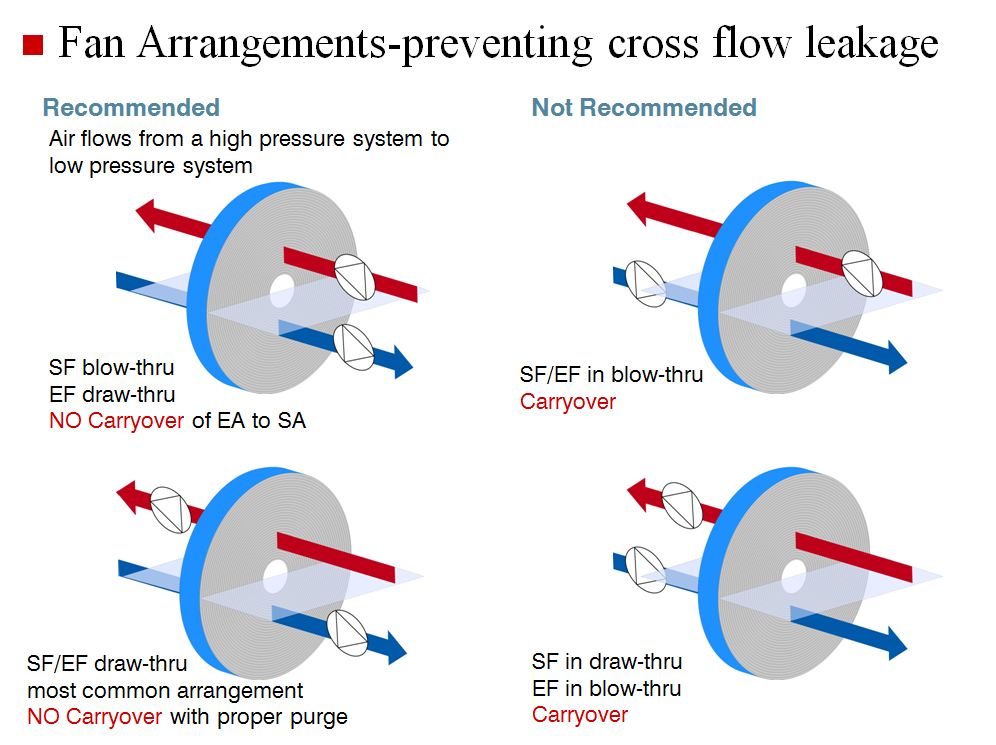
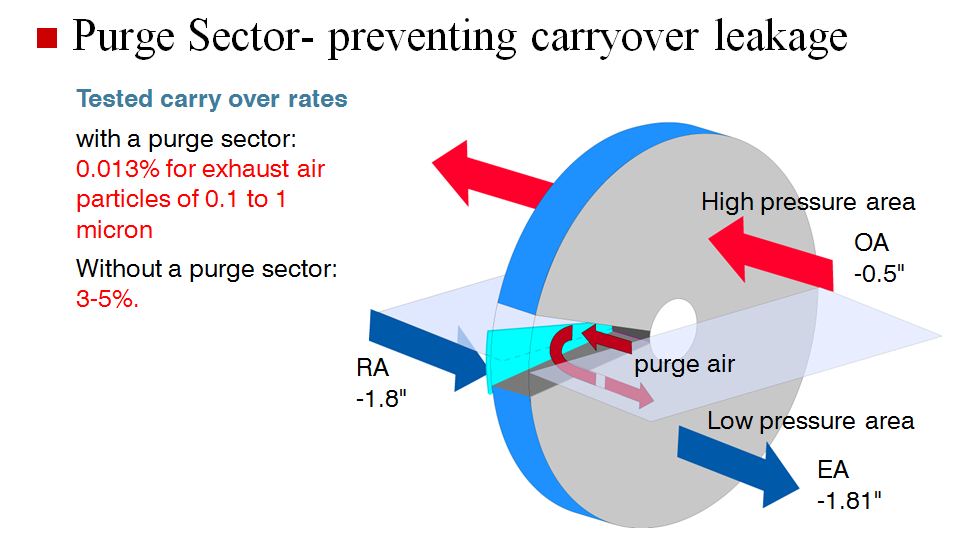
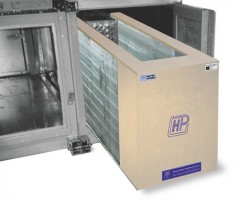 The Wrap Around Heat Pipe (or Dehumidification Heat Pipe) is used in lots of applications where reheat is typically used. They are usually applied as passive devices designed to match the system requirements. Modulation of the cooling coil alone is often adequate for control. In some instances the need for maximum sensible cooling overrides the need for humidity control. Because of this, it is necessary to temporarily lower the effectiveness of the heat pipe.
The Wrap Around Heat Pipe (or Dehumidification Heat Pipe) is used in lots of applications where reheat is typically used. They are usually applied as passive devices designed to match the system requirements. Modulation of the cooling coil alone is often adequate for control. In some instances the need for maximum sensible cooling overrides the need for humidity control. Because of this, it is necessary to temporarily lower the effectiveness of the heat pipe. 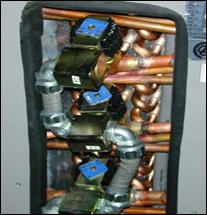
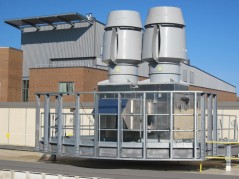 The University of New Hampshire (UNH) was looking to renovate Parsons Hall, which housed the Chemistry Department and a few related programs. The renovated facility was designed to accommodate wet teaching laboratories, research labs, the University Instrumentation Center and general classroom space. It was also to include office space for faculty, researchers, technicians, postdoctoral fellows, and student researchers, as well as common spaces such as a conference rooms and break-out spaces.
The University of New Hampshire (UNH) was looking to renovate Parsons Hall, which housed the Chemistry Department and a few related programs. The renovated facility was designed to accommodate wet teaching laboratories, research labs, the University Instrumentation Center and general classroom space. It was also to include office space for faculty, researchers, technicians, postdoctoral fellows, and student researchers, as well as common spaces such as a conference rooms and break-out spaces.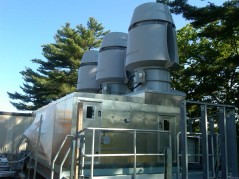
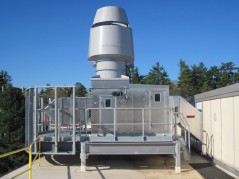
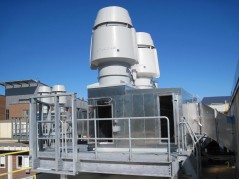
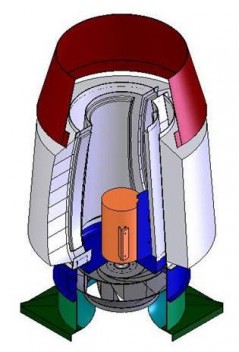
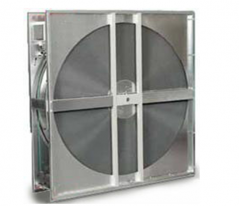 A. There are a variety of energy recovery devices to use for a given application. Device size can be critical as it usually dictates the size of the Air Handling Unit. The bigger the device, the larger the unit dimensions. Here is a rough guide that we use when starting to look at sizing the different types of energy recovery:
A. There are a variety of energy recovery devices to use for a given application. Device size can be critical as it usually dictates the size of the Air Handling Unit. The bigger the device, the larger the unit dimensions. Here is a rough guide that we use when starting to look at sizing the different types of energy recovery: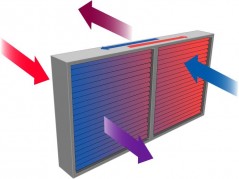 Keep in mind that these are starting points for design. With all devices, the greater the surface area, the greater the amount of energy recovery. These starting points consider the most cost effective design point. In any case where a payback can afford a larger device, we will use it.
Keep in mind that these are starting points for design. With all devices, the greater the surface area, the greater the amount of energy recovery. These starting points consider the most cost effective design point. In any case where a payback can afford a larger device, we will use it.